When investing in an SUV, longevity is a crucial factor that many buyers consider. While the modern SUV market offers numerous options with impressive initial performance, the true test of engineering excellence emerges as these vehicles approach and surpass the 100,000-mile mark.
This significant milestone often separates the exceptional from the mediocre, revealing which manufacturers have truly prioritized durability and consistent performance.
Some SUVs continue to deliver impressive power and reliability well beyond this threshold, maintaining their vigor and responsiveness as if they just rolled off the assembly line.
Conversely, others begin to show concerning signs of deterioration, with noticeable power loss, increased maintenance issues, and declining driving dynamics.
This comprehensive analysis examines five SUVs that impressively maintain their performance integrity beyond 100,000 miles and five that unfortunately experience significant power degradation.
By evaluating factors such as engine design, powertrain engineering, maintenance history patterns, and real-world owner experiences, we provide valuable insights for consumers seeking long-term satisfaction from their SUV investments.
Whether you’re considering a new purchase or evaluating the potential longevity of your current vehicle, this guide offers essential information about which models stand the test of time and which may leave you disappointed down the road.
5 SUVs That Maintain Power After 100K Miles
These exceptionally engineered SUVs defy the typical power degradation of high-mileage vehicles, delivering virtually the same performance at 100,000 miles as they did when new.
Their overbuilt engines, robust transmissions, and meticulous quality control create powertrains that resist wear even through years of demanding family duty and adverse conditions.
Sophisticated engine management systems adapt to normal component wear, preventing the noticeable power loss that plagues lesser vehicles as mileage accumulates.
Owners regularly report maintaining factory acceleration numbers and towing capabilities well beyond six-figure mileage, proving these durable performers truly stand the test of time.
1. Toyota 4Runner
The Toyota 4Runner stands as perhaps the quintessential example of mechanical longevity in the SUV market, with its legendary 4.0-liter V6 engine routinely demonstrating remarkable durability well beyond the 100,000-mile mark.
This naturally aspirated powerplant, producing a consistent 270 horsepower and 278 lb-ft of torque, benefits tremendously from Toyota’s conservative engineering approach that prioritizes reliability over cutting-edge technology.
Unlike many competitors that implement more complex forced-induction systems to achieve performance targets, the 4Runner’s straightforward engine design minimizes potential failure points while maintaining excellent thermal efficiency even as the vehicle ages.
The 4Runner’s robust five-speed automatic transmission, though considered dated by some critics, has proven to be exceptionally durable, with many owners reporting seamless operation well beyond 200,000 miles with only regular fluid changes.
This mechanical simplicity extends throughout the drivetrain, where overbuilt components and generous safety margins ensure minimal performance degradation over time.
Toyota’s dual independent variable valve timing system (VVT-i) has demonstrated remarkable resistance to carbon buildup issues that plague many high-mileage engines, maintaining consistent valve actuation and combustion efficiency throughout the vehicle’s lifespan.
Owner testimonials consistently highlight the 4Runner’s unwavering performance characteristics, with many reporting negligible power loss even after a decade of use.
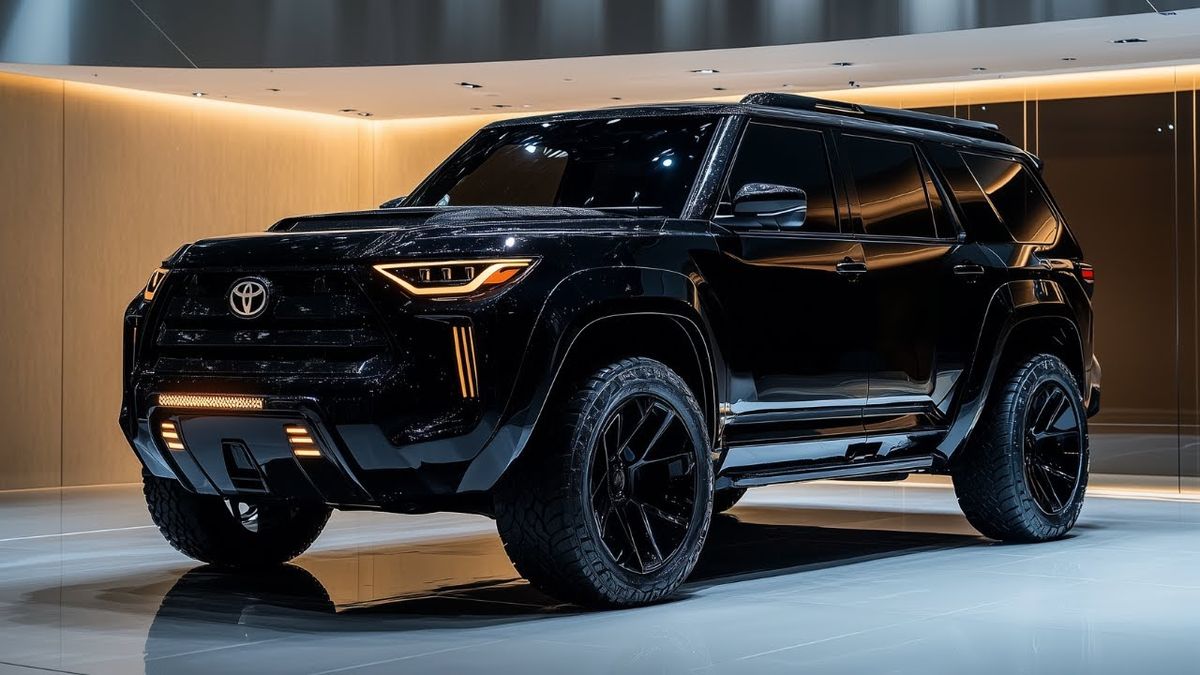
The vehicle’s body-on-frame construction contributes significantly to this reputation, as it isolates drivetrain components from chassis flex that can accelerate wear in unibody competitors.
Toyota’s meticulous quality control processes and exceptional parts consistency further enhance the 4Runner’s longevity profile, with remarkably few warranty claims for major powertrain components even in high-mileage examples.
Professional mechanics frequently cite the 4Runner’s accessible maintenance design as another factor contributing to its sustained performance.
With straightforward access to critical components and reasonable service intervals, owners are more likely to maintain their vehicles properly, preventing the cascading failures that often plague neglected high-mileage SUVs.
Additionally, the vehicle’s robust cooling system has proven exceptionally effective at regulating operating temperatures even in extreme conditions, significantly reducing thermal stress that accelerates component fatigue in less capable systems.
For those seeking tangible evidence of the 4Runner’s durability, one need only examine the robust used market, where high-mileage examples consistently command premium prices compared to competitors with similar specifications.
This market validation speaks volumes about the model’s reputation for maintaining its performance integrity well beyond typical ownership periods, making it an excellent investment for buyers prioritizing long-term reliability over the latest technological features.
2. Lexus GX 460
The Lexus GX 460 represents the pinnacle of luxury SUV durability, featuring an exceptional 4.6-liter V8 engine that maintains its refined power delivery characteristics virtually unchanged even after surpassing the 100,000-mile threshold.
This meticulously engineered powerplant delivers a robust 301 horsepower and 329 lb-ft of torque through an equally overbuilt six-speed automatic transmission, creating a drivetrain package that exhibits remarkable resistance to performance degradation over extended use.
Lexus engineers have implemented extremely tight manufacturing tolerances throughout the engine, resulting in minimal internal wear even after years of operation in diverse conditions.
Behind the GX’s impressive durability lies Toyota’s legendary quality control processes, which become particularly evident in this premium offering.
Each engine undergoes extensive testing before installation, ensuring consistent performance characteristics across the production run.
The GX benefits tremendously from its relatively conservative internal design philosophy, eschewing overly complex technologies like twin-turbocharging in favor of a naturally aspirated engine that prioritizes long-term reliability.
This approach has yielded exceptional results in long-term owner satisfaction surveys, with many GX owners reporting virtually unchanged acceleration and towing capabilities even as their vehicles approach 200,000 miles.
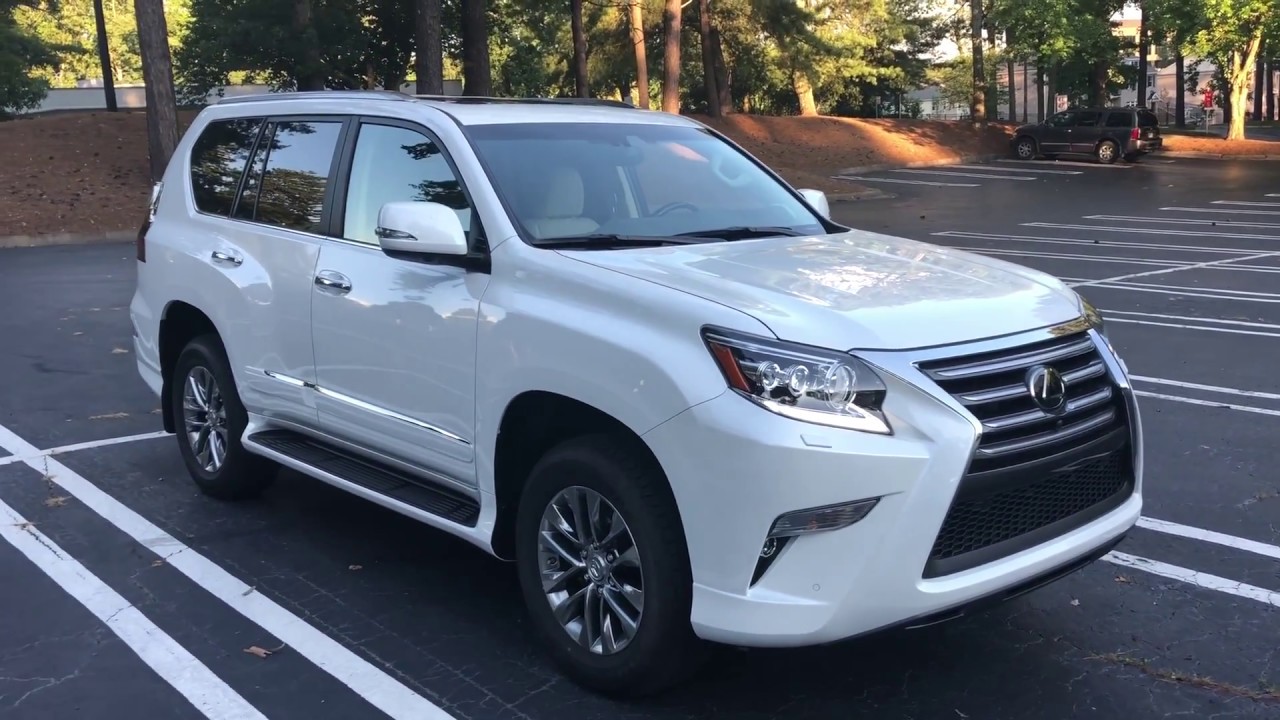
The vehicle’s sophisticated full-time four-wheel-drive system incorporates robust Torsen limited-slip center differential technology that has demonstrated remarkable longevity, maintaining optimal torque distribution characteristics without developing the slop or hesitation that commonly afflicts aging 4WD systems.
Similarly, the GX’s hydraulic power steering system has proven far more durable than the electric systems used in many competitors, delivering consistent feedback and weight throughout the vehicle’s lifespan without the electronic failures that often plague high-mileage modern SUVs.
Lexus’s commitment to rigorous maintenance protocols significantly contributes to the GX’s sustained performance profile.
The brand’s comprehensive service program includes detailed inspection procedures that identify potential issues before they impact performance, allowing for preventative maintenance that preserves the vehicle’s original capabilities.
Furthermore, the GX’s engine management system incorporates sophisticated adaptive learning algorithms that continuously optimize performance parameters based on component wear, effectively compensating for minor efficiency losses that would be noticeable in less sophisticated vehicles.
Even the GX’s auxiliary systems demonstrate exceptional engineering foresight, with the vehicle’s variable valve timing system utilizing hardened components that resist the timing chain stretch that commonly affects high-mileage engines.
This attention to detail extends to seemingly minor components like fuel injectors, which maintain their precise spray patterns well beyond 100,000 miles due to their premium construction quality and effective filtration systems.
For discerning buyers seeking a luxury SUV experience that maintains its performance integrity throughout extended ownership, the Lexus GX 460 offers compelling evidence that premium engineering can indeed deliver tangible long-term benefits.
3. Ford Expedition (EcoBoost V6)
Ford’s Expedition, particularly models equipped with the sophisticated 3.5-liter EcoBoost V6 engine, has established an impressive reputation for power retention that defies the conventional wisdom about turbocharged engines.
This advanced powerplant, delivering a substantial 375-400 horsepower (depending on model year) and an impressive 470-480 lb-ft of torque, incorporates numerous engineering innovations specifically designed to maintain performance characteristics beyond the 100,000-mile mark.
Ford’s extensive development of this engine platform across multiple vehicle applications has allowed for continuous refinement, resulting in a remarkably resilient forced-induction system that avoids many pitfalls typically associated with high-mileage turbocharged engines.
Critical to the Expedition’s sustained performance is its advanced twin-turbocharger system, which employs water-cooled bearings and premium metallurgy to resist the heat-related degradation that commonly affects turbochargers in demanding applications.
Ford engineers implemented sophisticated electronic wastegate controls that maintain precise boost pressure management throughout the engine’s service life, preventing the gradual power loss experienced in many turbocharged competitors.
The direct injection system features exceptionally durable high-pressure fuel pumps and injectors designed to maintain optimal atomization patterns even after extensive use, preserving combustion efficiency and preventing the carbon buildup issues that plague many direct-injection engines.
The Expedition’s 10-speed automatic transmission, co-developed with General Motors, represents another significant factor in the vehicle’s long-term performance profile.

This sophisticated gearbox maintains precise shift timing and torque transfer efficiency well beyond 100,000 miles due to its advanced thermal management system and premium synthetic transmission fluid specification.
The transmission’s intelligent adaptive learning capabilities continuously adjust shift parameters based on driver behavior and component wear, effectively masking the gradual efficiency losses that would be noticeable in less sophisticated transmissions.
Ford’s commitment to extensive real-world durability testing has yielded impressive results for Expedition owners, with the powertrain demonstrating remarkable resilience even in demanding applications like towing and off-road use.
The vehicle’s comprehensive cooling system design incorporates separate heat exchangers for the engine, transmission, and turbocharger intercoolers, ensuring optimal operating temperatures across all drivetrain components regardless of ambient conditions or workload.
This thermal efficiency plays a crucial role in preserving the engine’s power output by preventing the heat-related performance degradation that affects many high-mileage vehicles.
Service records from long-term Expedition owners reveal consistently strong performance metrics even after years of operation, with compression tests and diagnostic reports showing minimal deviation from factory specifications.
The EcoBoost engine’s relatively conservative internal components, including forged connecting rods and a robust crankshaft, provide substantial mechanical headroom that accommodates the inevitable minor wear without compromising performance.
These engineering decisions reflect Ford’s understanding that true durability extends beyond simply preventing catastrophic failure to include maintaining the vehicle’s original performance characteristics throughout an extended service life.
4. Subaru Forester (Non-Turbo Models)
The Subaru Forester, particularly in its naturally aspirated configurations, has cultivated an impressive reputation for maintaining consistent power delivery well beyond the 100,000-mile threshold.
Central to this durability is Subaru’s iconic boxer engine design, which offers fundamental mechanical advantages that contribute significantly to long-term performance retention.
The horizontally-opposed cylinder configuration creates naturally balanced primary forces that minimize vibration-induced wear on bearings and other critical components, while simultaneously lowering the vehicle’s center of gravity for improved handling characteristics that remain consistent throughout the vehicle’s lifespan.
Unlike many competitors that implement complex variable valve timing systems prone to high-mileage issues, Subaru’s AVCS (Active Valve Control System) utilizes a remarkably durable design with minimal moving parts.
This engineering approach significantly reduces the likelihood of timing-related performance degradation that commonly affects aging engines.
The Forester’s direct-injection system in newer models incorporates specially designed injectors with exceptional resistance to deposit formation, maintaining optimal fuel atomization patterns well beyond 100,000 miles.
This attention to combustion efficiency preservation directly translates to consistent power delivery that owners regularly highlight in long-term satisfaction surveys.
Subaru’s commitment to all-wheel drive technology has resulted in a symmetrical AWD system that demonstrates remarkable resilience to the performance degradation that frequently affects more complex differential-based systems.
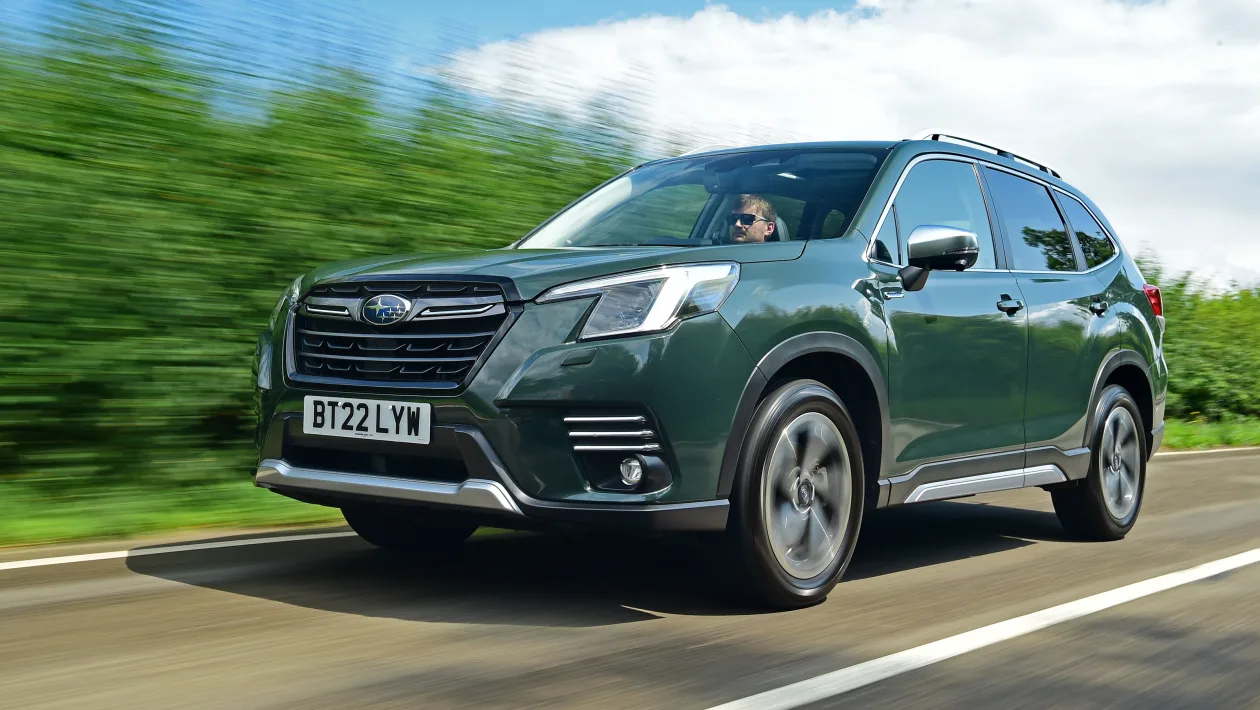
The relatively straightforward mechanical design distributes torque through components engineered with generous safety margins, significantly reducing the likelihood of efficiency losses due to internal wear.
The Lineartronic CVT transmission, while initially viewed with skepticism by some enthusiasts, has proven exceptionally durable in real-world applications, maintaining its smooth power delivery characteristics with minimal deterioration when properly maintained according to factory schedules.
Environmental testing has revealed another significant advantage for high-mileage Foresters: exceptional resistance to performance losses in extreme temperature conditions.
The boxer engine’s efficient cooling design, with cylinders directly exposed to cooling airflow, maintains more consistent operating temperatures than many V-configuration or inline alternatives.
This thermal stability becomes increasingly important as engines age and tolerance stack-ups become more pronounced, helping the Forester maintain consistent combustion efficiency regardless of external conditions or engine hour accumulation.
Perhaps most compelling are the extensive owner testimonials documenting Foresters maintaining virtually unchanged acceleration capabilities and fuel efficiency metrics even after extended service periods.
Professional mechanics frequently report minimal internal engine wear during high-mileage rebuilds, confirming the effectiveness of Subaru’s engineering approach in creating truly durable powertrains.
This real-world validation, combined with the vehicle’s consistently strong residual values in the used market, provides compelling evidence that the naturally aspirated Forester delivers on its promise of long-term performance consistency for owners willing to adhere to recommended maintenance protocols.
Also Read: 5 Cars That Nail Voice Commands and 5 That Mishear Constantly
5. Mercedes-Benz G-Class
The Mercedes-Benz G-Class stands as perhaps the ultimate testament to overengineered durability in the luxury SUV segment, with its various powertrains demonstrating remarkable resistance to performance degradation even after extensive use.
The G-Wagen, as it’s affectionately known, benefits tremendously from a development philosophy that prioritizes mechanical robustness over weight savings or manufacturing economy, resulting in a vehicle that maintains its formidable power delivery characteristics essentially unchanged even after surpassing 100,000 miles.
This exceptional durability applies across multiple engine options, though the naturally aspirated V8 variants and the meticulously engineered diesel offerings deserve particular recognition for their longevity profiles.
Mercedes engineers have incorporated numerous design elements specifically intended to preserve performance characteristics throughout extended service periods.
The engines feature exceptionally rigid blocks with substantial wall thicknesses that minimize dimensional changes during thermal cycling, maintaining precise bearing clearances even after hundreds of thousands of miles.
Similarly, the cylinder heads employ premium materials and reinforced valve seats that resist the recession commonly experienced in high-mileage engines, preserving compression ratios and volumetric efficiency throughout the vehicle’s service life.
These fundamental engineering decisions create a powertrain that maintains its original performance envelope far longer than more conventionally designed alternatives.

The G-Class transmission systems demonstrate equally impressive durability characteristics, with the robust 7G-Tronic and later 9G-Tronic automatic transmissions maintaining crisp shift quality and torque transfer efficiency well beyond typical replacement intervals.
Mercedes’ commitment to exceptional fluid quality and generous cooling capacity pays substantial dividends in long-term performance retention, preventing the gradual slippage and shift delay that commonly affect aging transmissions.
The transfer case and differential components feature similar overbuilding, with many owners reporting unchanged off-road capability even after decades of regular use.
The vehicle’s relatively conservative electronic management systems contribute significantly to its performance longevity profile.
Unlike more aggressively tuned competitors that extract maximum performance at the expense of component stress, the G-Class control modules implement protective algorithms that preserve drivetrain integrity while still delivering impressive performance.
This approach prevents the subtle degradation that commonly affects more highly-strung alternatives as components wear and tolerances increase.
The vehicle’s substantial cooling systems maintain optimal operating temperatures across all drivetrain components regardless of ambient conditions or workload, significantly reducing thermal stress that accelerates wear in less robustly engineered competitors.
Independent testing has consistently validated the G-Class’s exceptional durability claims, with dynamometer results showing minimal power loss even in examples with extensive mileage accumulation.
This objective data supports the anecdotal evidence from owners who routinely report unchanged acceleration, towing capacity, and overall performance well into six-figure mileages.
For discerning buyers willing to absorb the substantial initial purchase price and ongoing maintenance costs, the G-Class offers compelling evidence that proper engineering can indeed create an SUV that maintains its performance integrity essentially indefinitely when properly maintained.
5 SUVs That Feel Gutless
Despite impressive initial performance figures, these disappointing SUVs experience dramatic power loss once the odometer crosses into six digits, struggling up hills they once climbed effortlessly.
Their overtaxed engines and questionable long-term engineering choices result in compressed rings, clogged fuel injectors, and transmission hesitation that saps acceleration and responsiveness.
What started as spirited family haulers has devolved into sluggish transportation appliances, with owners reporting 0-60 times increasing by several seconds compared to when the vehicles were new.
The substantial performance degradation significantly impacts everyday drivability and safety, particularly during highway merging and passing maneuvers that suddenly require much more planning.
1. Nissan Pathfinder (2013-2020)
The Nissan Pathfinder, particularly those produced between 2013 and 2020, represents one of the most pronounced examples of performance degradation among modern SUVs as mileage accumulates.
This generation marked Nissan’s controversial transition from the robust body-on-frame construction to a unibody platform paired with a continuously variable transmission (CVT), creating a combination that has proven problematic for long-term power retention.
The vehicle’s 3.5-liter V6 engine, while initially delivering adequate performance with 284 horsepower and 259 lb-ft of torque, begins exhibiting noticeable power loss often well before reaching the 100,000-mile threshold.
At the heart of the Pathfinder’s performance degradation lies its notorious JATCO CVT transmission, which has become the subject of numerous class-action lawsuits and technical service bulletins throughout its production run.
This transmission system utilizes a steel belt and pulley mechanism that demonstrates concerning wear patterns in high-mileage examples, creating slippage that manifests as significant hesitation during acceleration and effective power loss.
Even with Nissan’s extended warranty coverage for certain model years, many owners report progressive performance deterioration beginning around 60,000-80,000 miles, with particularly pronounced issues in vehicles subjected to towing or mountainous driving conditions.
The Pathfinder’s variable valve timing system presents another common failure point that directly impacts power delivery in aging examples.
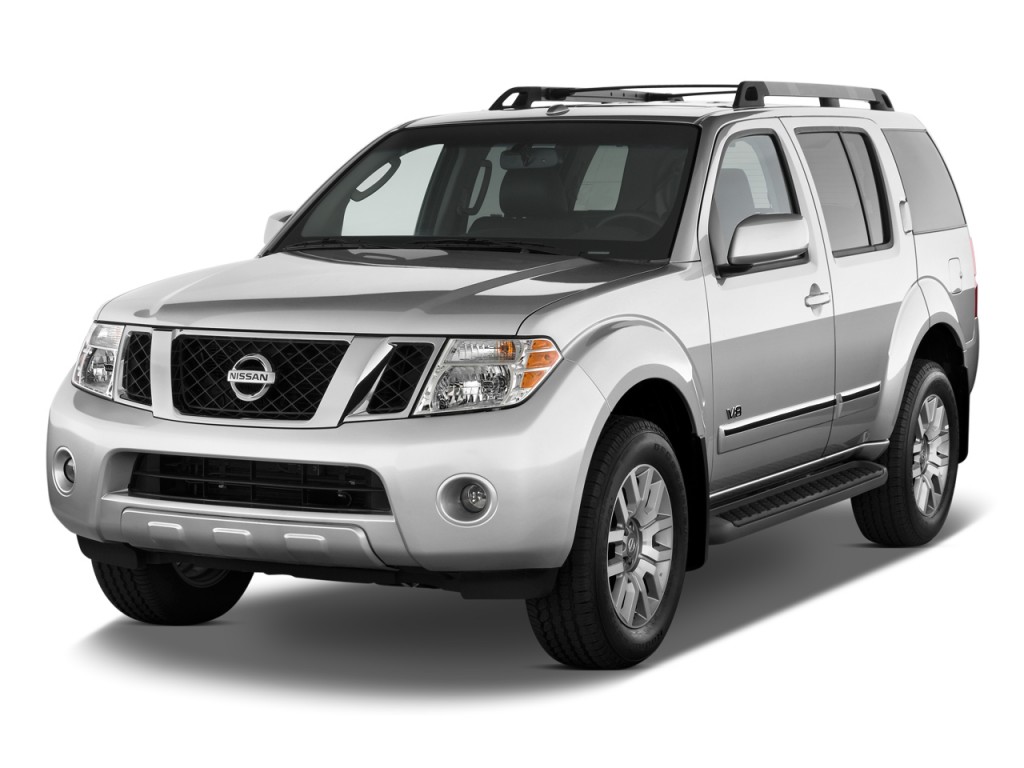
The vehicle’s VVT solenoids and actuators demonstrate concerning susceptibility to oil contamination and sludge accumulation, causing erratic timing adjustments that reduce combustion efficiency and effective power output.
While this issue can sometimes be temporarily addressed through chemical cleaning processes, many high-mileage Pathfinders exhibit permanent timing system damage that results in consistently reduced power delivery compared to when new.
Thermal management represents another significant challenge for aging Pathfinders, with the cooling system demonstrating marginal capacity for maintaining optimal operating temperatures under sustained load.
The vehicle’s relatively compact radiator and limited airflow design create conditions where engines frequently operate at elevated temperatures during demanding driving scenarios, accelerating wear on critical components including piston rings and cylinder walls.
This gradual degradation of engine sealing surfaces leads to compression loss and oil consumption that further compromise power delivery as mileage accumulates.
Perhaps most concerning for prospective Pathfinder owners is the frequency of catastrophic CVT failures reported after extended ownership periods.
Even with religious adherence to Nissan’s maintenance schedules, many owners experience complete transmission failure requiring expensive replacement rather than the gradual performance decline seen in more durable competitors.
This pattern has created a used market where high-mileage Pathfinders command significantly reduced resale values compared to segment alternatives, reflecting the widespread recognition of these performance longevity issues among informed buyers seeking reliable long-term transportation.
2. Jeep Compass (2011-2016)
The Jeep Compass produced between 2011 and 2016 stands as a particularly egregious example of performance degradation in the compact SUV segment, with owners consistently reporting significant power loss as these vehicles accumulate mileage.
Central to these issues is the vehicle’s problematic powertrain combination featuring the underpowered 2.0L and 2.4L World Gas Engines paired with either a conventional automatic or continuously variable transmission, neither of which has demonstrated satisfactory longevity characteristics in real-world applications.
The 2.4L engine, while initially producing a modest 172 horsepower and 165 lb-ft of torque, frequently exhibits substantial power loss by the 75,000-mile mark due to multiple engineering shortcomings.
Particularly concerning is the Compass’s notorious oil consumption issues, which become increasingly pronounced as the vehicles age.
The engine’s piston ring design has demonstrated inadequate durability, allowing gradually increasing oil migration into the combustion chambers that creates carbon deposits on valve surfaces and within combustion chambers.
This accumulation directly impacts volumetric efficiency and compression ratios, manifesting as noticeably reduced power delivery and throttle response that owners frequently describe as “gutless” compared to when the vehicles were new.
Service records indicate that many Compass engines consume between 1-2 quarts of oil per 1,000 miles by 100,000 miles, significantly exceeding normal consumption parameters.
The model’s transmission options present equally concerning longevity profiles. The 6F24 six-speed automatic transmission exhibits premature clutch wear patterns that create slippage and delayed engagement in high-mileage examples, effectively reducing power delivery to the wheels even when the engine is performing optimally.
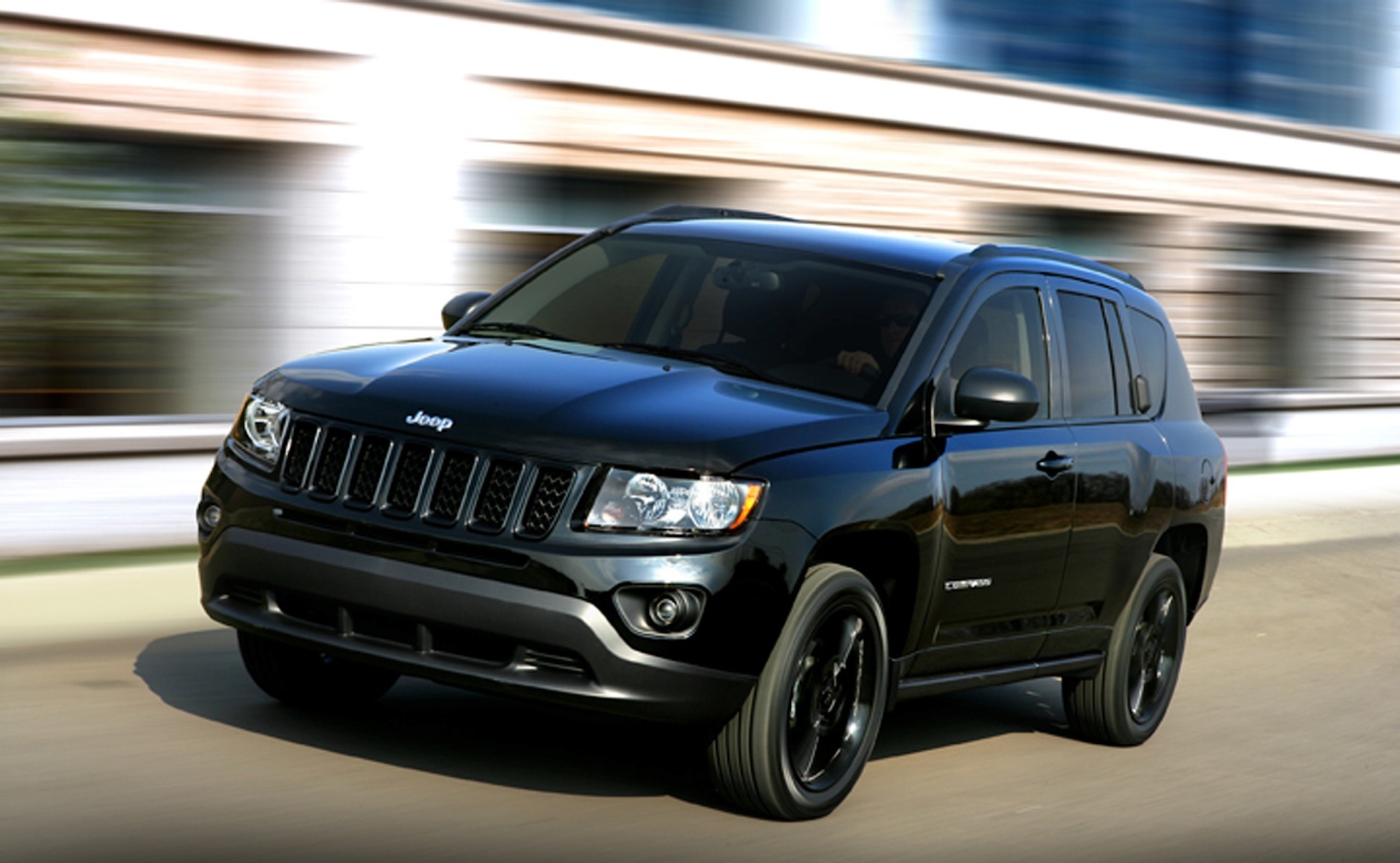
Similarly, the available CVT demonstrates concerning belt wear characteristics and control solenoid failures that create erratic power delivery and significant performance degradation as mileage accumulates.
These transmission issues compound the engine’s declining output, creating a driving experience that deteriorates noticeably throughout ownership.
The Compass’s electronic throttle control system represents another common failure point directly impacting perceived power delivery.
The throttle position sensor and related components have demonstrated poor durability in humid or corrosive environments, creating erratic throttle response that manifests as hesitation during acceleration.
Additionally, the vehicle’s mass airflow sensor frequently develops contamination that causes the engine management system to implement conservative fuel mapping, further reducing power output as a protective measure.
These electronic issues often create an impression of severe power loss even when mechanical components remain within acceptable operational parameters.
Consumer reliability data provides damning evidence of the Compass’s performance degradation over time, with the model consistently ranking among the lowest in owner satisfaction surveys specifically regarding powertrain durability.
Professional mechanics frequently report that even comprehensive maintenance, including valve cleaning services and transmission fluid exchanges, yields only temporary improvements in vehicles that have exceeded 100,000 miles.
This documented pattern of inevitable performance decline has created a used market where high-mileage Compass models command exceptionally low resale values compared to segment competitors, reflecting informed buyers’ awareness of these significant longevity concerns.
3. Chevrolet Equinox (2010-2017 with 2.4L Engine)
The Chevrolet Equinox produced between 2010 and 2017, particularly models equipped with the problematic 2.4-liter Ecotec engine, represents one of General Motors’ most notorious examples of performance degradation in modern SUVs.
This powertrain, initially delivering 182 horsepower and 172 lb-ft of torque, has demonstrated alarming tendencies toward rapid performance decline as vehicles approach and exceed 100,000 miles.
At the core of these issues lies the engine’s fundamentally flawed design, featuring inadequate oil control systems that create cascading effects throughout the powertrain as vehicles age in normal service.
Most concerning is the engine’s well-documented excessive oil consumption, with many owners reporting usage rates exceeding one quart per 1,000 miles by the 60,000-mile mark.
This consumption stems primarily from premature wear of the piston rings and cylinder walls, creating gradually increasing blow-by that allows combustion gases to enter the crankcase while simultaneously permitting oil migration into the combustion chambers.
The resulting carbon accumulation on valve surfaces severely impacts airflow efficiency, while combustion chamber deposits effectively reduce compression ratios over time.
These combined effects create a substantial and progressive power loss that becomes increasingly noticeable during highway passing maneuvers and hill climbs.
The Equinox’s variable valve timing system presents another significant failure point directly impacting power retention.
The engine utilizes relatively fragile plastic timing chain guides and tensioners that demonstrate concerning wear patterns in high-mileage examples, creating timing chain stretch that progressively alters valve timing events.
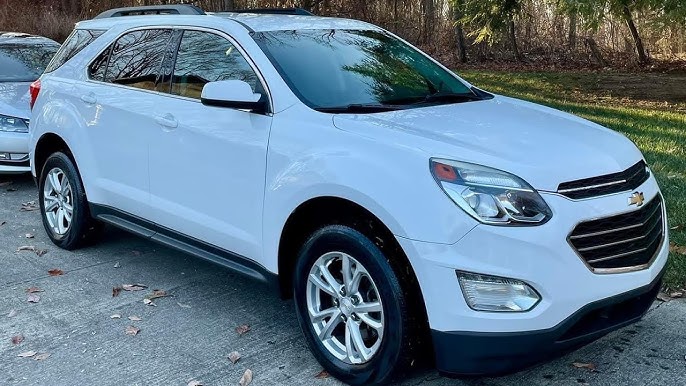
This timing deviation reduces volumetric efficiency and combustion effectiveness, further compromising power delivery as mileage accumulates.
While General Motors implemented several design revisions throughout production, even later examples exhibit these issues with concerning regularity according to dealer service records.
Fuel delivery components in the Equinox’s direct injection system demonstrate equally problematic longevity characteristics.
The high-pressure fuel pump and injectors frequently develop flow restrictions due to deposit accumulation, creating fueling inadequacies that the engine management system attempts to compensate for through increasingly conservative timing and mixture settings.
These compensatory measures further reduce effective power output while simultaneously reducing fuel economy, creating a frustrating ownership experience as performance steadily deteriorates while operating costs increase.
The comprehensive nature of the Equinox’s performance degradation is perhaps best illustrated by General Motors’ eventual implementation of a special warranty extension covering certain aspects of the 2.4L engine, though many owners report that even after receiving remedial services, their vehicles never regain their original performance characteristics.
Professional mechanics frequently advise potential used Equinox buyers to avoid these model years entirely unless comprehensive maintenance records document proactive oil consumption mitigation measures.
This advice reflects the industry’s recognition that these vehicles represent one of the most pronounced examples of inevitable performance decline in the modern SUV marketplace.
4. Dodge Journey (2009-2020)
The Dodge Journey, produced from 2009 through 2020 without significant architectural updates, represents perhaps the most egregious example of performance degradation in the midsize crossover segment.
This model’s extended production run without fundamental redesign created a vehicle increasingly outpaced by evolving competition, with its aging powertrains demonstrating particularly concerning longevity characteristics.
While initially competitive upon release, the Journey’s performance deteriorates dramatically as mileage accumulates, creating an ownership experience characterized by steadily declining capabilities and increasing frustration.
The base 2.4-liter four-cylinder engine, producing a modest 173 horsepower and 166 lb-ft of torque when new, exhibits particularly pronounced power loss as vehicles age.
This World Engine design, shared with several Chrysler and Mitsubishi products, suffers from multiple durability concerns, including timing chain stretch and valve seat recession that directly impact combustion efficiency.
As these components wear, the engine experiences gradually decreasing compression ratios and volumetric efficiency, creating noticeably reduced throttle response and acceleration capability.
By 100,000 miles, many Journey engines exhibit compression readings 15-20% below factory specifications, translating directly to proportional power loss that leaves the already-underpowered vehicle feeling dangerously sluggish during highway merging maneuvers.
The Journey’s transmission options fare equally poorly in long-term performance retention.
The four-speed automatic paired with four-cylinder models demonstrates concerning clutch wear patterns that create increasing slippage as mileage accumulates, effectively reducing the already-limited power reaching the wheels.
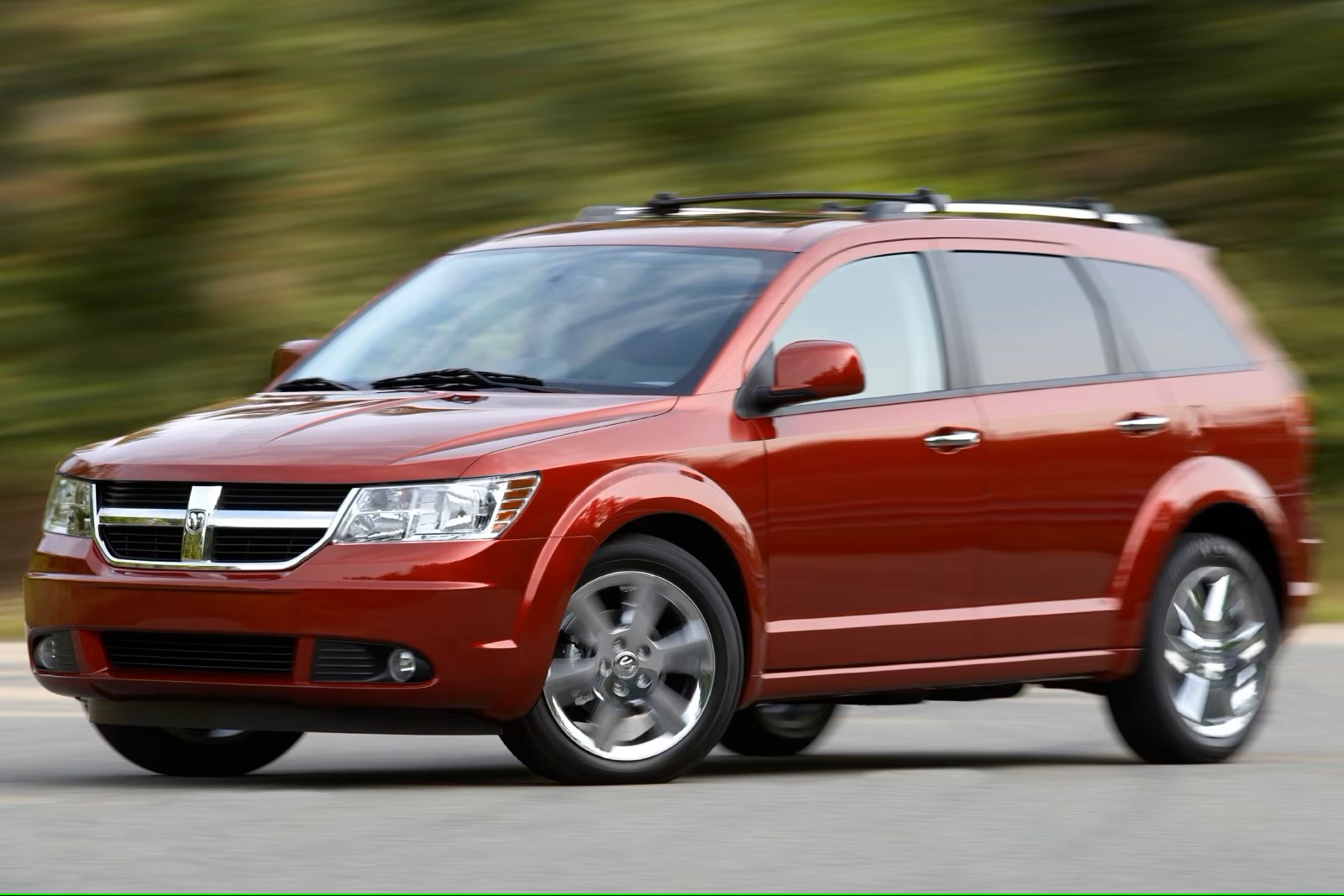
The six-speed automatic found in V6 models exhibits similar durability concerns, with torque converter lockup clutches frequently developing shudder conditions that force the transmission control module to implement compensatory measures limiting power transfer.
These transmission issues compound the engines’ declining output, creating an ownership experience characterized by steadily deteriorating performance regardless of driving conditions.
The Journey’s engine management systems implement increasingly aggressive power limitations as vehicles age, attempting to compensate for developing mechanical issues through conservative operating parameters.
As oxygen sensors and catalytic converters age, the powertrain control module frequently defaults to fuel-rich operating conditions that preserve emissions compliance at the expense of performance.
Similarly, as the electronic throttle control components develop increased resistance due to carbon accumulation, the vehicle’s throttle response becomes increasingly delayed and unpredictable, further contributing to the perception of severe power loss in high-mileage examples.
Consumer reliability data provides damning evidence of the Journey’s performance degradation, with the model consistently ranking among the lowest in owner satisfaction surveys specifically regarding powertrain durability.
Professional technicians frequently report that even comprehensive maintenance yields minimal improvement in vehicles exceeding 100,000 miles, as the fundamental design limitations cannot be overcome through conventional service procedures.
This documented pattern of inevitable decline has created a used market where high-mileage Journey models command exceptionally low resale values, reflecting informed buyers’ awareness of these significant longevity concerns and the vehicle’s reputation for becoming increasingly gutless as it ages.
5. Land Rover Discovery Sport (2015-2018)
The Land Rover Discovery Sport, particularly examples produced between 2015 and 2018, presents a concerning case study in premium SUV performance degradation despite its impressive initial specifications and brand heritage.
These model years feature the Ingenium 2.0-liter turbocharged four-cylinder engine, initially producing a respectable 240 horsepower and 250 lb-ft of torque, paired with a nine-speed ZF automatic transmission.
While this powertrain delivers satisfactory performance when new, numerous engineering shortcomings become increasingly apparent as these vehicles accumulate mileage, creating a premium SUV that feels progressively more underpowered throughout ownership.
Central to the Discovery Sport’s performance issues is its problematic turbocharger system, which demonstrates concerning durability characteristics in real-world applications.
The relatively compact turbocharger operates under significant thermal stress due to limited cooling provisions, creating accelerated wear to critical components, including turbine shaft bearings and wastegate actuators.
As these components deteriorate, the engine experiences gradually decreasing boost pressure and increasing turbo lag, effectively reducing the vehicle’s torque output and responsiveness.
By 100,000 miles, many Discovery Sports exhibit boost pressure readings 20-30% below factory specifications, translating directly to proportional power loss that leaves the vehicle feeling significantly less capable than when new.
The model’s direct injection system presents equally concerning longevity profiles.
The high-pressure fuel pump frequently develops internal wear that reduces maximum fuel delivery capacity, creating fueling inadequacies during high-demand driving scenarios.

Similarly, the fuel injectors demonstrate concerning patterns of deposit accumulation that alter spray patterns and reduce atomization efficiency, directly impacting combustion quality and effective power output.
These fuel system issues become increasingly pronounced as vehicles age, creating a gradual but noticeable decline in throttle response and acceleration capability that owners frequently describe as “gutless” compared to the vehicle’s original performance characteristics.
Perhaps most frustrating for Discovery Sport owners is the nine-speed automatic transmission’s poor longevity profile.
This complex gearbox utilizes multiple clutch packs and sophisticated hydraulic controls that demonstrate concerning wear patterns in high-mileage examples, creating increasingly erratic shift quality and delayed engagement that further compromises effective power delivery.
The transmission control module attempts to compensate for developing mechanical issues by implementing increasingly conservative shift strategies, frequently holding lower gears longer and avoiding higher ratios entirely during certain driving conditions.
These adaptive measures further reduce the vehicle’s performance envelope, creating an increasingly disappointing driving experience as mileage accumulates.
The comprehensive nature of the Discovery Sport’s performance degradation is reflected in its catastrophic depreciation curve, with three-year-old examples often trading for less than 40% of their original MSRP, significantly worse than segment averages.
Professional technicians frequently report that even comprehensive maintenance, including turbocharger rebuilding and transmission fluid services, yields only temporary improvements in vehicles exceeding 100,000 miles.
This documented pattern of inevitable decline creates a challenging value proposition for used buyers seeking long-term satisfaction, as the vehicle’s impressive initial specifications rarely translate to sustained performance in real-world ownership experiences beyond the warranty period.
Also Read: 5 Cars With Seamless Bluetooth and 5 That Always Disconnect

